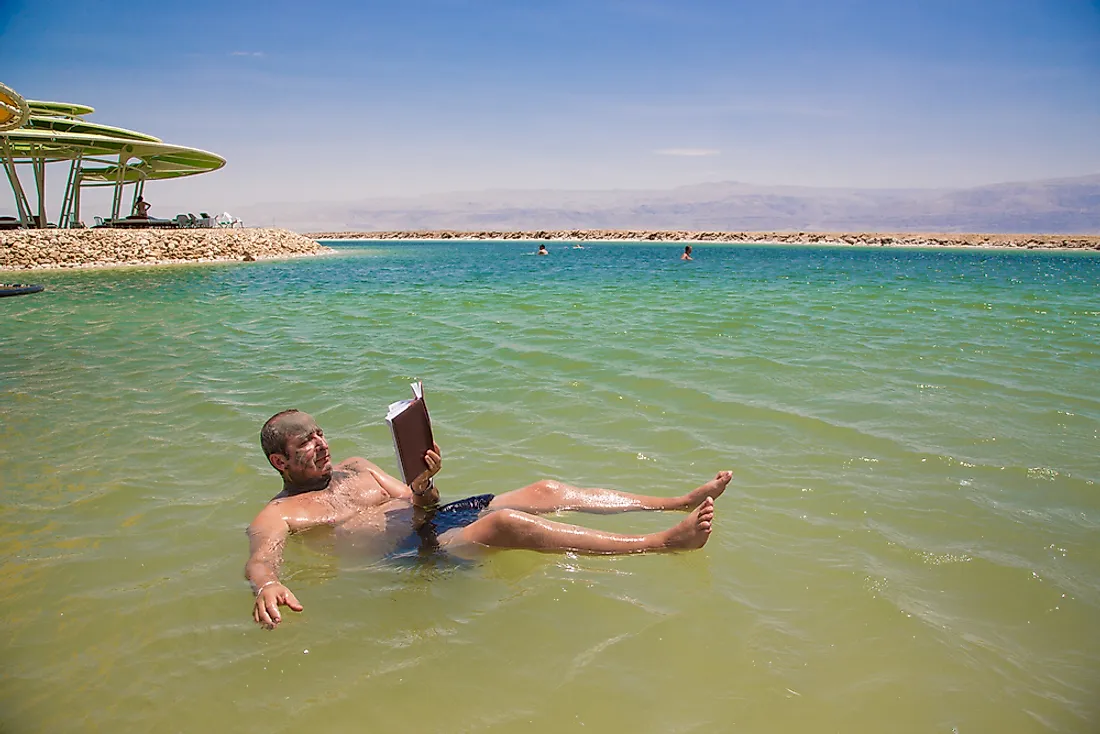Is It Possible to Drown In the Dead Sea?

The Dead Sea is a salt lake located along the border of Jordan, Palestine and Israel. It covers an area of 234 square miles. With a salinity level of 34.2%, the Dead Sea is one of the saltiest lakes in the world and is the most saline in the Middle East. The lake stretches a length of 31 miles, and its widest point extends 9 miles. The Dead Sea is located at the lowest terrestrial elevation point at 1,412 feet below sea level. The Dead Sea is a deep lake with its deepest point reaching 997 feet. The primary tributary of the Dead Sea is the famed River Jordan.
History Of The Dead Sea
The salinity of the Dead Sea has made the lake important to past civilizations. The Dead Sea was used by the ancient Egyptians to produce balms which they employed in the mummification of their dead. The lake was also used to create potash which was used in the manufacturing of fertilizers. Due to its location in ancient Judea, the lake is frequently mentioned in the Bible with the Abrahamic religions having a close connection to the lake. In the mid-20th century, several ancient religious texts were discovered inside caves near the lake which later came to be known as the Dead Sea Scrolls. The Dead Sea Scrolls offer perfect bases on which theologians assess the accuracy of the modern versions of the Bible.
Biosphere Of The Dead Sea
The Dead Sea’s extreme saline environment makes it unsuitable for marine life and is devoid of any macroscopic aquatic life. However, the lake is host to several species of bacteria and algae which colonize its depths. The majority of all life is located in the delta of the Jordan River where vast plantations of palm trees and papyrus reeds are found. Historians believe the area was also hosting sugarcane, sycamore figs, henna and balsam trees which have now completely disappeared.
The “Floating on Water” Concept
The Dead Sea has one of the highest salinity levels of any salt lake with levels reaching 34.2%, a fact that is attributed to its bedrock’s geology as well as its lack of outlets. The salinity of the lake increases its water density, a factor which makes it easy for an adult man to float on its surface. A human body floats by displacing a mass of water equivalents to its body mass.
However, in 2010, the Dead Sea was labeled as one of the most dangerous places to swim after 21 people being rescued by lifeguards. The lake’s buoyancy is its most lethal attribute. People who float on the Dead Sea’s surface report of having a hard time to push themselves under the surface and this is potentially dangerous if a swimmer has his or her face down. This is because the swimmer may find it hard to turn so as to have his or her face above the water surface and could in turn easily drown. The high levels of salt in the water also add to the lethality of the situation as when ingested it can become harmful to the kidneys and the heart.











